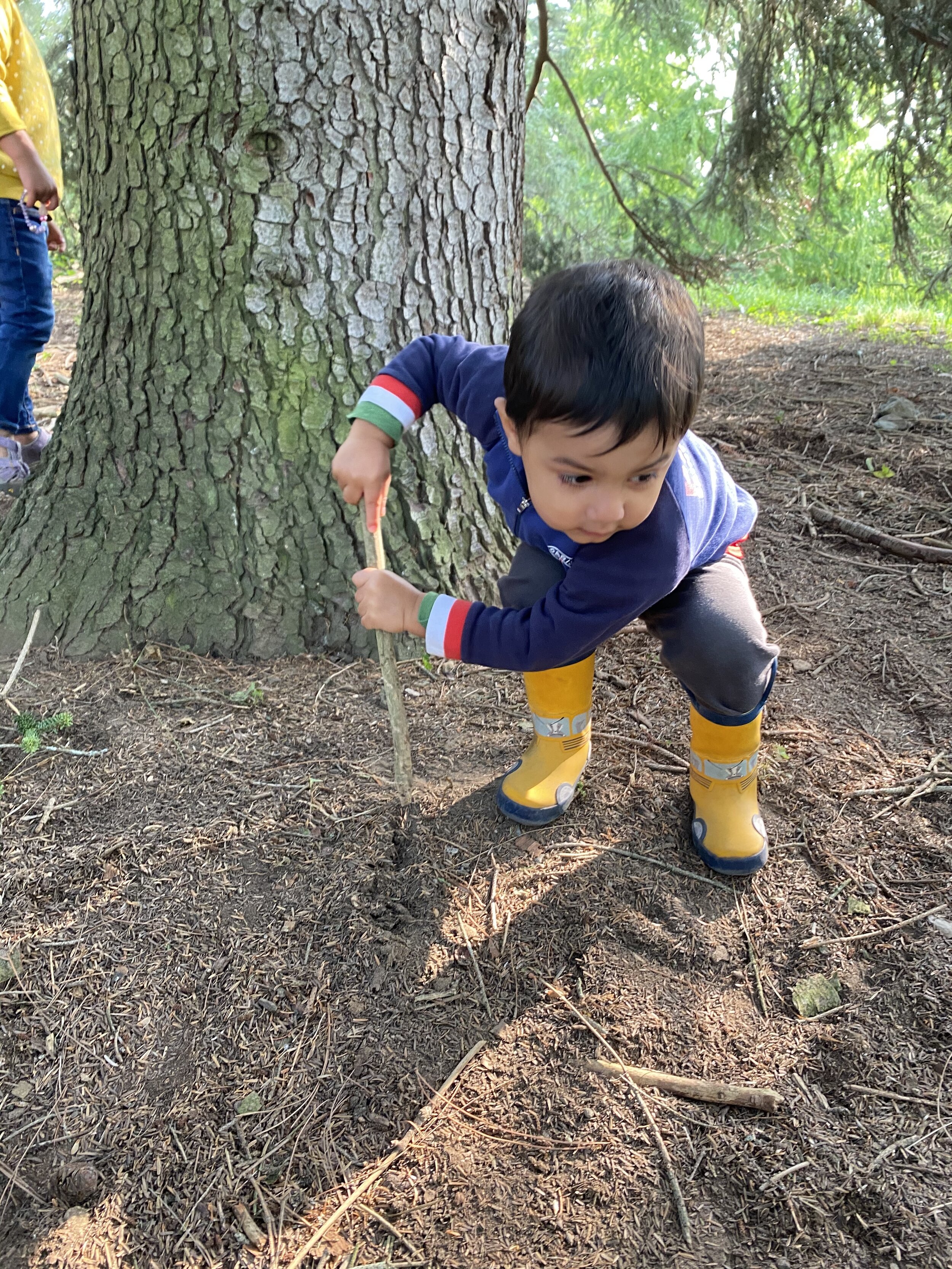"I NEED to Move!"
Nourishing Sensory Integration through Movement
“If we want to help life, the first condition of success is that we shall know the laws which govern it.”
Dr. Maria Montessori
And the laws which govern the toddler life form include serving the needs of what Dr. Montessori characterized as “the sensitive periods”- Temporary stages occurring during formative periods of development. The child demonstrates a specific and focused attraction toward a particular activity or action, which will be repeated until the need is met. If the need is not met, it can, and will most likely create a detriment to, or a gap in the child’s ongoing development- cracks in the foundation.
THE SENSITIVE PERIODS
Freedom of Movement -Large and Small Motor
Sense of Order
Development of Language-naming the world
Small Things
Social Emotional Development
All living things need to move, and toddlers are certainly no exception, if anything they are the rule!
Starting in infancy children unconsciously move from within and without to grow, strive and thrive. The seemingly random and repeated impulses which govern each stage ultimately transforms into coordination and control.
With the exertion of effort, (which is essential), the whole body leads the mind. These are some of the laws which govern human development.
Neuroscience now shows what Dr. Montessori discerned from her powers of scientific observation- children show us what they need to nourish their development / their sensory systems, and primary is the need for freedom of movement, to move in many kinds of ways, and be on the move.
“The unsatisfied (basic) needs of the child leave their mark on the adult, emerging as inhibitions that prevent genuine intellectual development and weaken the moral character.
Adults who have been brought up this way are not prepared to love others and to join with them in striving for a better life.”
Dr. Maria Montessori
The senses which govern movement
Proprioceptive Sense
Knowing where your body is in relation to others, or other things;
The brain plans movements for coordination
Vestibular Sense
Receptors in the inner ear discern the direction of movements
What does freedom of movement
look like?
Young children claim to have many needs, some of which are misguided, as they can not yet discern the difference between types of needs, or the difference between a want and a need.
Freedom of movement is not one them.
The need to move
is a
basic,
fundamental,
live affirming,
innate,
natural need.
MOVE!
Climb! Scootch! Scramble! Reach! Hang! Swing! Push! Pull! Roll! Bounce! Gallop! Bend! Jump! Skip! Balance! Slither! Carry! Dance! Throw! Dip! Kick! Lift! Heave! Wriggle! Fill! Hide! Shake! Clamber! Walk! Stomp! Rock! Fetch! Crane! Drape! Wrangle! Hop! Stretch! Slide! Crawl! Twirl! Tip toe! March! Wiggle! Run!
















